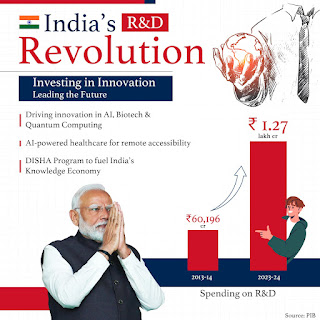The Production Linked Incentive (PLI) schemes launched by the Indian government are transforming the country's manufacturing landscape, ushering in a new era of growth and self-reliance. This initiative is a key component of the Aatmanirbhar Bharat vision, aiming to promote domestic manufacturing, reduce import dependence, and enhance export competitiveness.
Key Features of PLI Schemes
Sector-specific incentives: PLI schemes offer incentives to specific sectors, such as electronics, pharmaceuticals, textiles, and automotive, to promote domestic manufacturing.
Performance-based incentives: Incentives are provided based on the achievement of specific performance targets, such as production volume, revenue, and export growth.
Investment promotion: PLI schemes encourage investment in new plant and machinery, research and development, and skill development.
Benefits of PLI Schemes
Job creation: PLI schemes are expected to create millions of new job opportunities in the manufacturing sector.
Export growth: By promoting domestic manufacturing, PLI schemes aim to increase India's export competitiveness and reduce the country's trade deficit.
Reduced import dependence: PLI schemes aim to reduce India's dependence on imports by promoting domestic manufacturing of critical components and products.
Increased investment: PLI schemes are expected to attract significant investments in the manufacturing sector, driving economic growth and development.
Sectors Covered under PLI Schemes
Electronics: PLI scheme for electronics manufacturing aims to promote the production of electronic components, such as semiconductors, and finished goods, such as mobile phones and laptops.
Pharmaceuticals: PLI scheme for pharmaceuticals aims to promote the production of bulk drugs and formulations, reducing India's dependence on imports.
Textiles: PLI scheme for textiles aims to promote the production of high-quality textiles, such as technical textiles and sportswear.
Automotive: PLI scheme for automotive aims to promote the production of electric vehicles, hybrid vehicles, and auto components.
Impact on the Economy
The PLI schemes are expected to have a significant impact on the Indian economy, driving growth, employment, and export competitiveness. By promoting domestic manufacturing, PLI schemes aim to reduce India's trade deficit and increase the country's share in global exports.
The PLI schemes launched by the Indian government are a key initiative to promote domestic manufacturing, reduce import dependence, and enhance export competitiveness. By providing sector-specific incentives and promoting investment in the manufacturing sector, PLI schemes aim to drive economic growth, employment, and export competitiveness, aligning with the vision of Aatmanirbhar Bharat.














